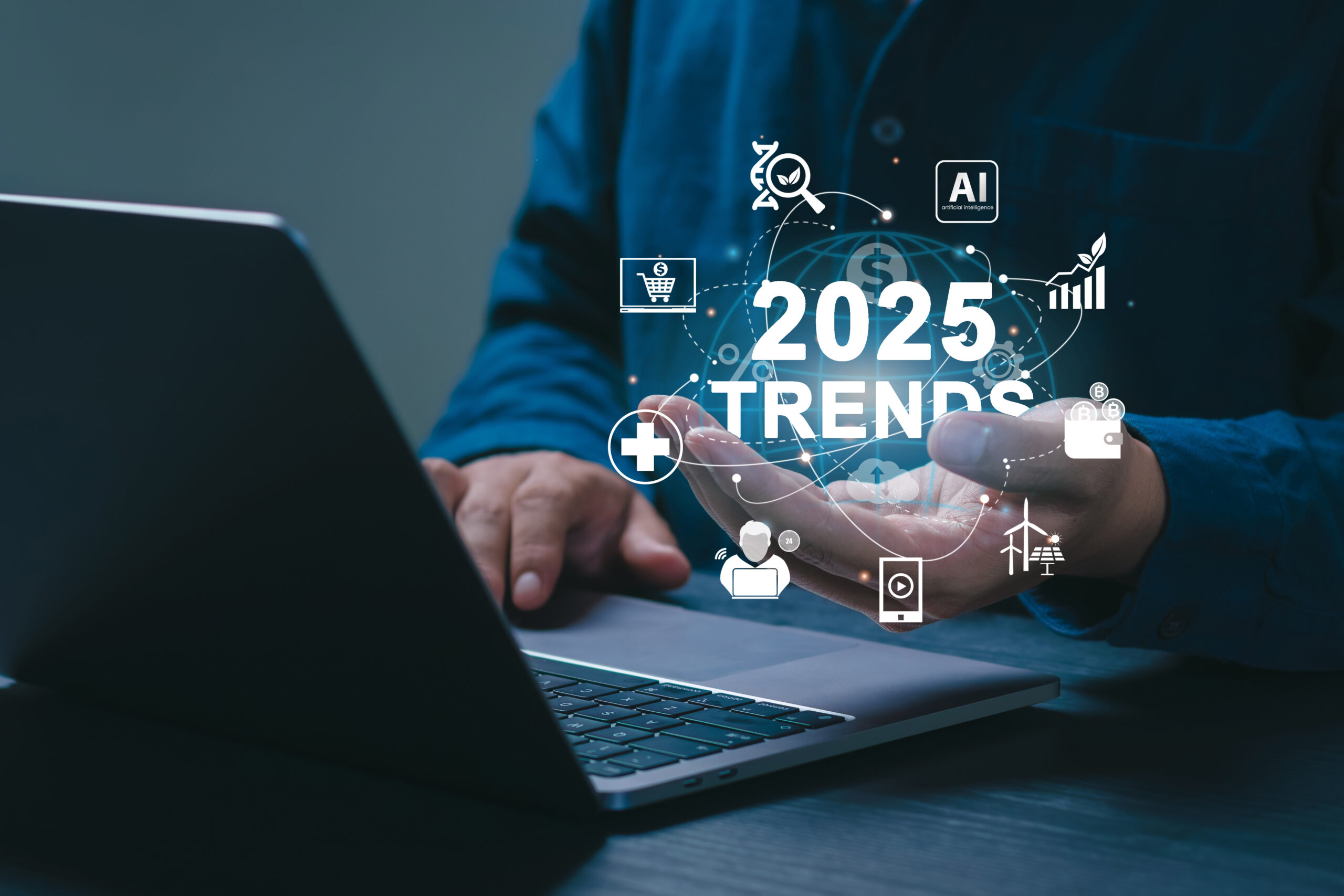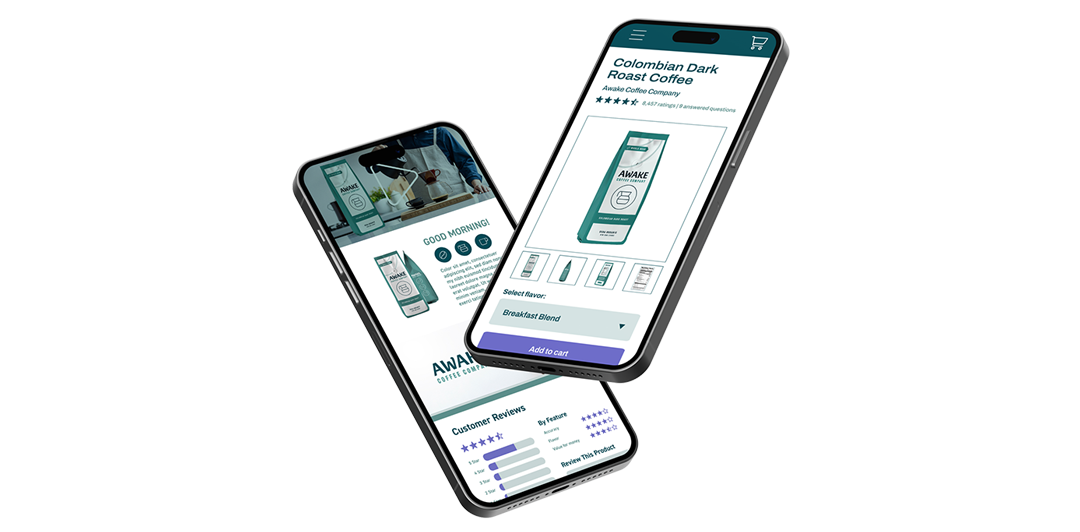Formulating your customer engagement strategy requires in-depth knowledge of the factors that drive consumer spending. Below we explore seven trends shaping consumer shopping behavior in 2023 and how you can structure your marketing and sales around these trends.
1. Online Shopping Will Continue to Dominate
Retailers have been focusing their energy on e-commerce channels for a few years now. But the global health crisis has accelerated an already booming e-commerce market. According to 1WorldSync’s Consumer Product Content Benchmark Report, 89 percent of consumers who shopped online in new categories during the pandemic won’t return to exclusively in-person shopping for those items.
Thanks to global shutdowns, businesses and consumers alike had to adapt to online shopping. Because e-commerce is now the preferred method of purchase for many consumers, businesses must continue innovating to provide the same high-level service and experience shoppers once received from in-store experiences.
Product page content significantly influences an online shopper’s experience with your brand. A recent report by 1WorldSync identifies five areas of content most likely to move consumers from consideration to purchase:
- Product Photos
- Product Descriptions
- Customer Reviews
- Product Features
- Product Specs
For a customer to have a positive online experience with your brand, you must publish quality content. The components above carry the most weight with customers shopping for your products. Low quality or a weakness in one area will negate strengths in the other categories.
1WorldSync provides e-tailers with the tools and expertise to produce quality content that drives engagement and sales. Because your customers are doing most of their shopping online, you must ensure your site is user-friendly, high-quality, and provides the solutions consumers are looking for.
2. Consumers Buy Direct from Brands
Direct-to-consumer sales bypasses intermediaries in the supply chain –– retailers, wholesalers, distributors, and advertisers –– and allows you to engage directly with the end-user. By cutting out the middleman, you increase your revenue, save on marketing, and can reach your customers directly. This allows for clearer communication and branding and a more personal connection with your audience.
To execute D2C sales, optimize your omnichannel SEO. Strategically crafting your product content encourages Google to crawl your site and place you at the top of the SERPs. Higher rankings increase your leads, enabling you to earn more revenue.
Customers want to buy directly from the producer. Make it easy for them. Optimized SEO helps them find you, and quality product content empowers them to make informed purchase decisions. Making your business directly accessible to consumers cultivates engagement and intimacy, two important factors for today’s buyer.
3. Personalization and Micro-Moments
As stated above, shoppers want to engage directly with the brands they’re shopping. They want to feel connected to businesses they purchase from, and they want a personalized buying experience. Consumers expect brands to both understand and respond to their unique needs, and they expect them to do so quickly.
Throughout the customer journey, individuals experience intent-driven moments in which they make decisions and shape their preferences. During these micro-moments, consumers expect immediate (and often personalized) solutions from brands. Capitalizing on these moments helps you position yourself to quickly meet specific customer needs.
Winning micro-moments helps you earn sales and take advantage of consumer shopping behavior. Identify your customer’s “I want to buy” moments, then be there in those moments of need. Provide helpful and optimized content that they can easily find in a search. And once you provide content that answers questions, introduce them to products that meet their needs. Make purchase easy, giving straightforward instructions and multiple purchase options, if possible.
When a customer experiences a micro-moment or a string of these moments, it’s important you position yourself to answer their call so you can then make a sale. Every moment matters. Optimizing your content across all channels ensures you never miss the opportunity for customer engagement –– and sales.
4. AR Provides an In-Store Experience at Home
Businesses across nearly every industry have adopted augmented reality technology to meet the needs of today’s consumer. Because e-commerce dominates the retail industry, companies are finding ways to deliver the in-store experience to shoppers from their phones –– and the comfort of home.
Augmented reality technologies provide immersive experiences to shoppers. Businesses implementing AR engage with consumers on a personal level, which leads to higher product sales and happier customers.
For example, many retailers offer virtual try-ons for their customers. Shoppers can see how clothing moves on their body through an app on their phone. IKEA is known for pioneering AR in their marketing strategies. Their virtual home staging shows customers how a piece of furniture will look in their home.
AR continues to expand and improve, giving shoppers a more accurate representation of their product purchase without them ever needing to walk into a store.
5. Subscriptions
Subscription services drive consumer purchase decisions. Netflix (and companies like it) popularized the subscription model. Now, consumers have come to expect subscription or membership options for the services and products they love.
Subscription retail shifts away from traditional business models where consumers purchase goods or services as needed. Subscriptions allow shoppers to receive those same products on a regular basis. This creates frequent, scheduled engagement, building deeper and long-term relationships with customers while bringing in predictable revenue for businesses.
By providing thoughtful, specifically curated subscription packages, you can increase your sales while maintaining your marketing budget, saving time and money. Consumers have come to expect subscription services. Provide value to your customer, and they’ll be happy to continue their subscription with you.
6. Conscious Consumption
As consumers choose brands to meet their needs, they’re shopping for more than a product. Conscious consumption informs not only what consumers buy, but who they buy from.
Shoppers are more aware than ever of the power their dollars hold. Climate and social issues affect the purchase decisions of today’s shoppers. When a consumer chooses a product or brand, they consider more than simply how a product will meet their wants or needs. Shoppers make decisions based on their personal ethics.
Consider your audience. Understand what they value, and show them you care about those same things. Invest resources into charities or organizations that move your customers. If sustainability is important to your shoppers, explore changes that improve sustainability, like packaging or even your production practices. Care about the things your customers care about, and show them.
In addition to providing value for the shopper, your brand must align with your consumer’s ethics and morals. Understanding the rise in conscious consumption allows you to position your business to provide needed solutions that speak to customers’ values.
7. Accurate Product Information
Presentation of online content drives sales. Time and time again, consumers note that detailed product content plays a significant role in their purchase decisions. In fact, 81 percent of consumers believe product content quality is more important than brand recognition. And 56 percent of customers surveyed said high-quality media, like 360-degree images, persuaded them to buy a product they didn’t think they needed. High-quality product content is the backbone of your marketing strategy.
Providing accurate and high-quality product information gives consumers confidence when shopping with your brand. Accuracy communicates integrity, and shoppers want to know they can trust the businesses they shop.
In addition to earning customer trust, accurate product information leads to reduced returns. The more information you can provide to shoppers, the better they understand what they’re purchasing. Include high-quality spin imagery so shoppers get a full view of the product they’re considering. Write specific product descriptions for each item, answering questions shoppers might have about the product.
When you can inform customers about the item they’re considering, they feel confident making a purchase. Publishing accurate product content increases customer satisfaction and leads to a decrease in returns: a win for businesses and customers alike.
Conclusion
Understanding consumer shopping behavior trends enables you to formulate strategies that reach your target audience. 1WorldSync provides you with the tools and expertise to optimize your business to effectively reach customers across all channels. Contact our team today so we can help you take advantage of the trends influencing today’s retail market.





